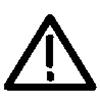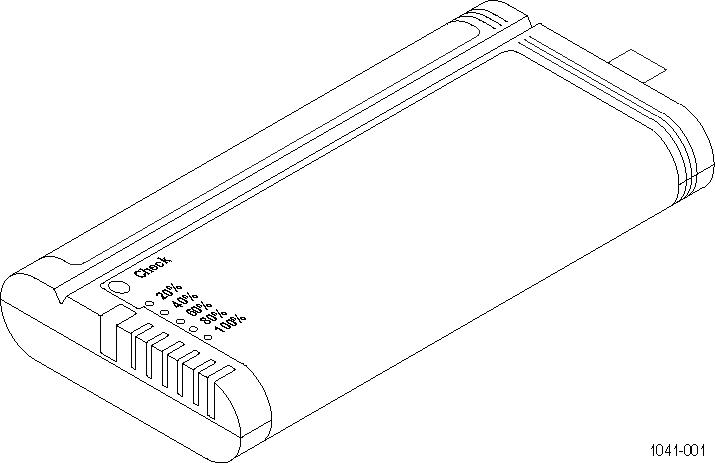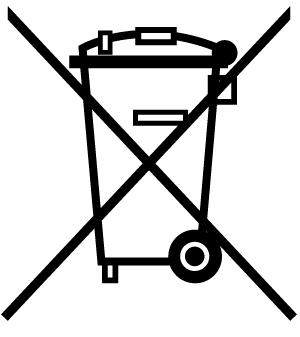Contact us
Live Chat with Tek representatives. Available 6:00 AM - 4:30 PM
Call us at
Available 6:00 AM – 5:00 PM (PST) Business Days
Download
Download Manuals, Datasheets, Software and more:
Feedback
TEKBAT-XX Rechargeable Battery Instructions
This document provides safety, compliance, specifications, maintenance, and battery handling information for the Tektronix rechargeable battery.
This manual applies to:
TEKBAT-01
By downloading, you agree to the terms and conditions of the Manuals Download Agreement.
Manuals Download Agreement
ATTENTION: please read the following terms and conditions carefully before downloading any documents from this website. By downloading manuals from Tektronix' website, you agree to the following terms and conditions:
Manuals for Products That Are Currently Supported:
Tektronix hereby grants permission and license to owners of Tektronix instruments to download and reproduce the manuals on this website for their own internal or personal use. Manuals for currently supported products may not be reproduced for distribution to others unless specifically authorized in writing by Tektronix, Inc.
A Tektronix manual may have been revised to reflect changes made to the product during its manufacturing life. Thus, different versions of a manual may exist for any given product. Care should be taken to ensure that one obtains the proper manual version for a specific product serial number.
Manuals for Products That Are No Longer Supported:
Tektronix cannot provide manuals for measurement products that are no longer eligible for long term support. Tektronix hereby grants permission and license for others to reproduce and distribute copies of any Tektronix measurement product manual, including user manuals, operator's manuals, service manuals, and the like, that (a) have a Tektronix Part Number and (b) are for a measurement product that is no longer supported by Tektronix.
A Tektronix manual may be revised to reflect changes made to the product during its manufacturing life. Thus, different versions of a manual may exist for any given product. Care should be taken to ensure that one obtains the proper manual version for a specific product serial number.
This permission and license does not apply to any manual or other publication that is still available from Tektronix, or to any manual or other publication for a video production product or a color printer product.
Disclaimer:
Tektronix does not warrant the accuracy or completeness of the information, text, graphics, schematics, parts lists, or other material contained within any measurement product manual or other publication that is not supplied by Tektronix or that is produced or distributed in accordance with the permission and license set forth above.
Tektronix may make changes to the content of this website or to its products at any time without notice.
Limitation of Liability:
TEKTRONIX SHALL NOT BE LIABLE FOR ANY DAMAGES WHATSOEVER (INCLUDING, WITHOUT LIMITATION, ANY CONSEQUENTIAL OR INCIDENTAL DAMAGES, DAMAGES FOR LOSS OF PROFITS, BUSINESS INTERRUPTION, OR FOR INFRINGEMENT OF INTELLECTUAL PROPERTY) ARISING OUT OF THE USE OF ANY MEASUREMENT PRODUCT MANUAL OR OTHER PUBLICATION PRODUCED OR DISTRIBUTED IN ACCORDANCE WITH THE PERMISSION AND LICENSE SET FORTH ABOVE.
Read Online
General safety summary
Use the product only as specified. Review the following safety precautions to avoid injury and prevent damage to this product or any products connected to it. Carefully read all instructions. Retain these instructions for future reference.
This product shall be used in accordance with local and national codes.
For correct and safe operation of the product, it is essential that you follow generally accepted safety procedures in addition to the safety precautions specified in this manual.
The product is designed to be used by trained personnel only.
To avoid fire or personal injury
Do not operate with suspected failures.
If you suspect that there is damage to this product, have it inspected by qualified service personnel.
Disable the product if it is damaged. Do not use the product if it is damaged or operates incorrectly. If in doubt about safety of the product, turn it off and disconnect the power cord. Clearly mark the product to prevent its further operation.
Examine the exterior of the product before you use it. Look for cracks or missing pieces.
Replace battery properly.
Replace batteries only with the specified type and rating.
Recharge battery properly.
Recharge the battery only for the recommended charge cycle at the recommended temperature.
Use proper battery charger.
Use only the Tektronix external battery charger or an approved Tektronix instrument to charge the battery.
Do not operate in wet/damp conditions
Be aware that condensation may occur if a unit is moved from a cold to a warm environment.
Do not operate in an explosive atmosphere
Keep product surfaces clean and dry
Remove the input signals before you clean the product.
Do not attempt to service this product.
There are no serviceable components in the battery.
Safety terms in this manual
These terms may appear in this manual:
 | WARNING:Warning statements identify conditions or practices that could result in injury or loss of life. |
 | CAUTION:Caution statements identify conditions or practices that could result in damage to this product or other property. |
Safety terms on the product
These terms may appear on the product:
- DANGER indicates an injury hazard immediately accessible as you read the marking.
- WARNING indicates an injury hazard not immediately accessible as you read the marking.
- CAUTION indicates a hazard to property including the product.
Symbols on the product
|
| When this symbol is marked on the product, be sure to consult the manual to find out the nature of the potential hazards and any actions which have to be taken to avoid them. (This symbol may also be used to refer the user to ratings in the manual.) |
The following symbols(s) may appear on the product.
 CAUTION: Refer to Manual |
Compliance information
This section lists the safety and environmental standards with which the instrument complies. This product is intended for use by professionals and trained personnel only; it is not designed for use in households or by children.
Direct compliance information inquiries to the following address:
Tektronix, Inc.
PO Box 500, MS 19-045
Beaverton, OR 97077, USA
Environmental compliance
This section provides information about the environmental impact of the product.
Product end-of-life handling
|
This symbol indicates that this product complies with the applicable European Union requirements according to Directives 2012/19/EU and 2006/66/EC on waste electrical and electronic equipment (WEEE) and batteries. For information about recycling options, check the Tektronix Web site (http://www.tek.com/productrecycling). |
Dispose of used battery promptly. Keep away from children. Do not disassemble and do not dispose of in fire.
 | CAUTION:The battery used in this device may present a risk of fire or chemical burn if mistreated. Do no disassemble, heat above 50°C, or incinerate. Replace battery with TEKBAT-XX only. Use of another battery may present a risk of fire or explosion. |
- Battery recycling
-
This lithium-ion rechargeable battery pack must be recycled or disposed of properly at its end of life.
- Lithium-ion batteries are subject to disposal and recycling regulations that vary by country and region. Always check and follow your applicable regulations before disposing of any battery. Contact Rechargeable Battery Recycling Corporation (www.rbrc.org) for U.S.A. and Canada, or your local battery recycling organization.
- Many countries prohibit the disposal of waste batteries in standard waste receptacles.
- Place only discharged batteries in a battery collection container. Use electrical tape or other approved covering over the battery connection points to prevent short circuits.
Transporting batteries
This small lithium rechargeable battery does not exceed a capacity of 100 Wh per battery or 20 Wh per component cell. Each battery type has been shown by the manufacturer to comply with the applicable requirements of the UN Manual of Tests and Criteria Part III, Subsection 38.3 and may not be shipped by air at a state of charge greater than 30% of its rated capacity unless packed with or installed in the associated equipment that it powers. Consult your carrier to determine which lithium battery transportation requirements are applicable to your configuration, including to its re-packaging and re-labeling, prior to reshipment of the product by any mode of transport.
Introduction
The TEKBAT-XX rechargeable battery is intended for use with specifically-designed Tektronix products. The battery consists of an array of lithium-ion cells and an internal battery controller device, including internal fault protection.
 | Note:The TEKBAT-XX battery and TEKCHG-XX external battery charger are the replacement products for the WFM200BA battery and WFM200BC external battery charger. The TEKBAT-XX battery supports charging in the TEKCHG-XX or legacy WFM200BC external battery charger. |
Refer to your instrument's documentation to ensure this is the proper battery for your instrument.
When the battery is not installed in an instrument, you can check the battery charge level by pressing the Check button on the back of the battery. LEDs illuminate to indicate the amount of charge in increments of approximately 20%.

 | Note:For optimum performance, charge the battery completely before using it for the first time or after prolonged storage. |
Battery maintenance guidelines
The TEKBAT-XX lithium-ion rechargeable battery requires routine maintenance and care in its use and handling. Be sure to use the following guidelines to safely use the TEKBAT-XX lithium-ion batteries and achieve the maximum battery life span.
Battery considerations
Do not leave a battery unused for an extended period of time, either in the product or in storage. When a battery has been unused for six months, check the charge status, and charge or dispose of the battery as appropriate. See Charging the battery and Battery recycling.
The typical estimated life of a lithium-ion battery is about two to three years, or 300 to 500 charge cycles, whichever occurs first.
A rechargeable lithium-ion battery has a limited life and will gradually lose its capacity to hold a charge. This loss of capacity (aging) is irreversible. As the battery loses capacity, the length of time it will power the product (run time) decreases.
A lithium-ion battery continues to slowly discharge (self-discharge) when not in use or while in storage. You need to routinely check the charge status of the battery.
Only use the battery in approved Tektronix instruments.
Battery maintenance
- Observe and note the run time that a new fully-charged battery provides for powering your product. You can use this new battery run time as a basis to compare run times for older batteries. The run time of your battery will vary depending on the product's configuration and the applications that you run.
- The battery gives the best performance when operated at normal room temperature, 20°C ±5°C (68°F ±9°F).
- Routinely check the charge status of the battery.
- Carefully monitor a battery that is approaching the end of its estimated life.
- Consider replacing the battery with a new one if the battery run time drops below about 80% of the original run time, or the battery charge time increases significantly.
- Follow the storage requirements if you store or do not use a battery for an extended period. If you do not follow the storage requirements, and the battery will not power the instrument when installed, consider the battery to be damaged. Do not connect power to the instrument during this time. Remove the battery from the instrument. Do not attempt to recharge or reuse the battery. Replace it with a new battery.
Battery charging
The battery charges automatically when installed in an approved Tektronix instrument that is connected to an external power supply. You can also charge the battery with the Tektronix external battery charger (TEKCHG-XX). Remove the battery from the charger when charging is complete.
A lithium-ion battery will self-discharge during non-use. To achieve the longest operating time, charge your battery before use. If you plan to store batteries, read the instructions in the Battery storage section of this document.
| Configuration | Typical charging time |
|---|---|
| One fully discharged battery charging in the instrument. | Time varies per instrument type and the instrument's power usage while charging. See instrument user manual for charge time. |
| One or two fully discharged batteries charging in the Tektronix external battery charger | 5 hours |
 | CAUTION:To avoid damage to the battery, use only the Tektronix external battery charger or an approved instrument to charge the battery. Do not connect any other voltage source to the battery. |
For optimum performance, charge the battery completely before using it for the first time or after prolonged storage.
To discharge the battery completely, continue to run the instrument on the battery until automatic shutdown occurs. After the instrument shuts down, either recharge the battery promptly or remove it from the instrument until you are ready to recharge the battery.
 | Note:To prolong the life of the battery and to prevent shutdown, do not operate or charge the battery at high temperatures. For best results, allow the battery to cool to room temperature before using or charging the battery. Do not leave a battery discharged for extended periods. See the Storing batteries section for information on how to properly store a battery. |
- The battery is fully charged.
- The internal temperature of the battery exceeds the safe charging threshold.
- A fault condition occurs.
- The battery is fully discharged.
- The internal temperature of the battery exceeds the safe discharging threshold.
- A fault condition occurs.
Battery handling
- Do not disassemble, crush, drop, or puncture the battery.
- Do not short the external contacts on the battery.
- Do not expose the battery to fire or water.
- Do not expose the battery to temperatures above +60°C (+140°F).
- Seek medical advice if a battery or part of it has been swallowed.
- Do not put batteries near heat or fire. Do not put in sunlight.
- Keep the battery clean and dry. Clean dirty connectors with a dry, clean cloth.
- Batteries contain hazardous chemicals that can cause burns or explode. If exposure to chemicals occurs, clean with soap and water and get medical aid. Repair the product before use if the battery leaks.
- Do not attempt to open, modify, reform or repair a battery that appears to be malfunctioning, or which has been physically damaged.
- Keep the battery away from children and animals.
- Avoid exposing the battery to excessive shock or vibration.
- Do not use a damaged battery or charger.
- If a battery has leaking fluids, do not touch any fluids. Dispose of a leaking battery. See the Battery recycling section for information on disposal and recycling.
- In case of eye contact with fluid, do not rub eyes. Immediately flush eyes thoroughly with water for at least 15 minutes, lifting upper and lower lids, until no evidence of the fluid remains. Seek medical attention.
Battery storage
- Store batteries in a low-humidity environment free of corrosive gases. Storing batteries in high-humidity environments, or outside the temperature range, can cause oxidation on the metallic parts, increased leakage, significant aging and premature failure.
- Do not store batteries near heat or fire. Do not store in the sunlight.
- Do not keep batteries in a place where the terminals can be shorted by metal objects (for example, coins, paper clips, or pens).
- Do not remove a battery from its original packaging until required for use.
- When possible remove the battery from the equipment when not in use.
- Charge the battery to approximately 50% of capacity at least once every six months.
- Remove the battery and store it separately from the instrument. Refer to the documentation for your instrument for instructions on removing and installing the battery.
- For optimal battery life, store the battery at temperatures between +5°C and +25°C (+41°F and +77°F). Higher temperatures reduce the battery storage life.
Battery replacement
Replace the lithium-ion battery only with a TEKBAT-XX battery.
See the Battery recycling section for information on disposal and recycling.
Specifications
| Characteristic | Description |
|---|---|
| Capacity, typical | 6000 mAh, 86.4 Wh |
| Output, nominal | 14.4 VDC |
| Charge temperature | 0°C to +45°C (+32°F to +113°F); varies per charging current and battery heat dissipation characteristics. The actual limit may be lower. |
| Tektronix recommends using the TEKCHG-XX external battery charger to charge the TEKBAT-XX batteries in ambient environments greater than +30°C. | |
| Discharge temperature | -20°C to +60°C (-4°F to +140°F); varies per the discharge current and battery heat dissipation characteristics. The actual limit may be lower. |
| Storage temperature | -20°C to +35C (-4°F to +95°F) |
| Weight | Battery: approximately 447.4 g (15.78 oz) |
| Battery (including packaging): approximately 564 g (19.89 oz) |
Help us improve our technical documentation. Provide feedback on our TekTalk documentation forum.



